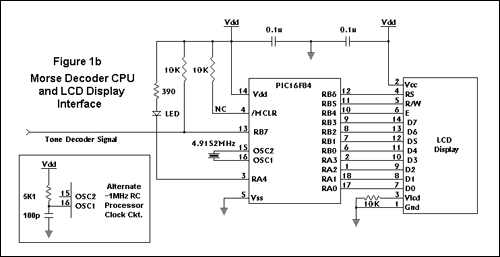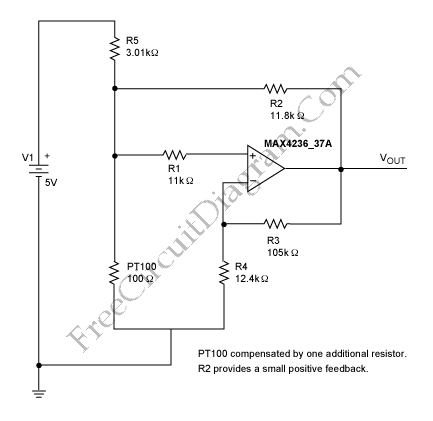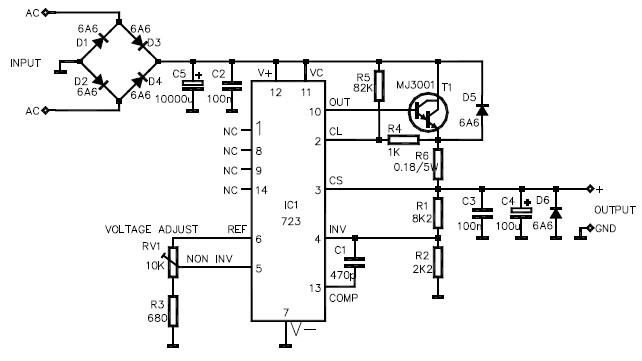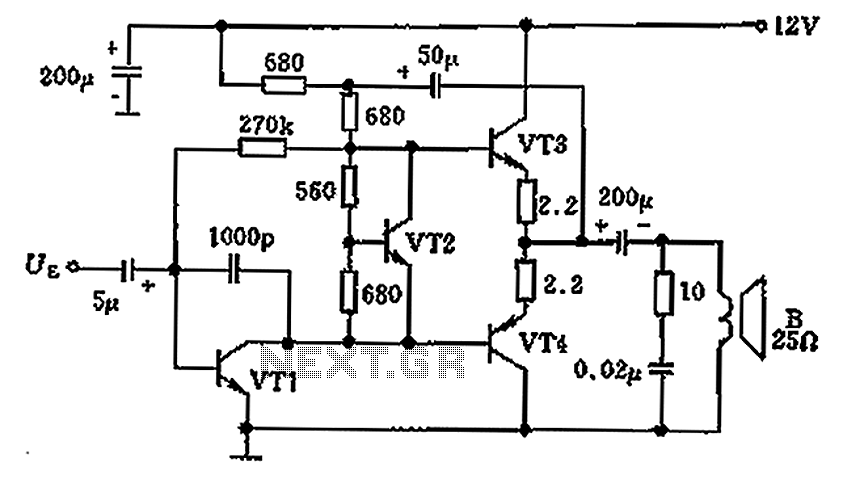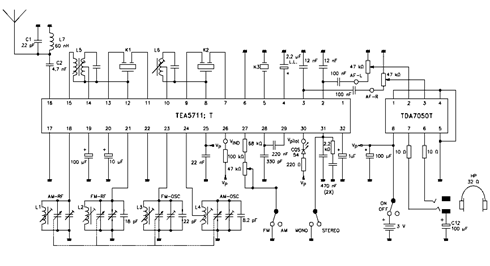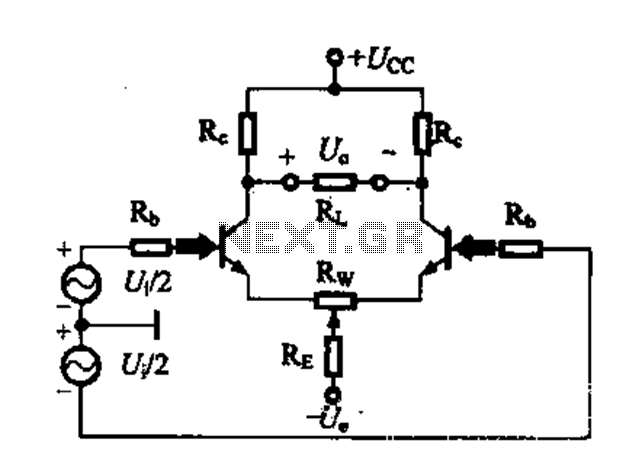
Simple Circuit Interfaces 1-Wire Temperature Sensor To A Microcontroller
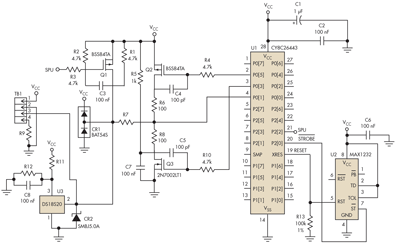
Temperature indicators and temperature-based products have garnered significant interest due to their numerous applications and various possible solutions, each presenting unique advantages and disadvantages. This concept focuses on a sensor interface that delivers high accuracy while minimizing board space. The discussion also addresses software issues and provides code samples for user integration and adaptation. The straightforward circuit connects a 1-Wire temperature sensor (DS18S20) to a Cypress microcontroller (CYBC26443). This technique can be adapted for other 1-Wire devices with minimal hardware and code modifications. Although any microcontroller can be utilized, a programmable system-on-a-chip (PSoC) is preferred for its flexibility in hardware block implementation. The PSoC also provides an application program interface (API), making it accessible for novices to work on and troubleshoot their projects. The 1-Wire products facilitate memory and mixed-signal capabilities through a single wire over a serial interface, delivering both power and communication via the serial protocol. These devices are simple to interface and ideal for applications requiring minimal interconnect complexity. The DS18S20 digital thermometer is chosen for its cost-effectiveness and an accuracy of 0.5 °C, with the overall design achieving 1 °C accuracy, accounting for measurement errors due to hardware limitations and testing tools. The DS18S20 supports parasitic power mode, has a programmable temperature threshold, and operates within a range of -55 °C to 125 °C. With additional hardware and software, it can function over distances of several feet. In the TO-92 package, pin 1 connects to ground, pin 2 serves as the open-drain 1-Wire interface pin for data input/output and power, and pin 3 connects to VCC or ground in parasitic mode. For the SO-8 package, pins 5, 4, and 3 correspond to these functions, with the remaining pins unconnected. The circuit schematic is illustrated in Figure 1. As the circuit draws power from the board, the device is connected to VCC. While this circuit interfaces the DS18S20 1-Wire temperature sensor with a Cypress CY8C26443 PSoC microcontroller, it can easily be adapted for other 1-Wire devices with any microprocessor. This interface version connects the DS18S20 directly to the MCU on the printed circuit board (PCB), as if the sensor were integrated into the microcontroller. The board design assumes negligible parasitic components that do not affect signal quality. The PSoC allows for either instantiating the 1-Wire module for interfacing or developing a custom protocol. Choosing to write a custom protocol increases firmware complexity but avoids the need for a two-port pin required by the PSoC module for data exchange between the MCU and sensor. The circuit design is straightforward, with CR2 protecting the sensor from voltage surges. R12 is typically unused; however, it is inserted in parasitic mode while R11 and C8 are omitted. U2, a MAX1232 microprocessor supervisory circuit, acts as a reset controller, which the MCU triggers at regular intervals. Code blocks for this interface circuit, along with comments, are available. The PSoC integrated development environment can be accessed at no cost. For extended distances, the circuit can be modified as shown in Figure 2, incorporating additional components to ensure sufficient source and sink currents are maintained to meet timing parameters.
The circuit design employs a DS18S20 temperature sensor interfaced with a Cypress CY8C26443 microcontroller, leveraging the 1-Wire communication protocol. The DS18S20 operates effectively within its specified temperature range and allows for precise temperature measurement. The choice of the PSoC microcontroller provides flexibility in hardware configuration and simplifies the integration process for developers, particularly those new to embedded systems. The design's simplicity is enhanced by the use of minimal external components, ensuring a compact layout suitable for various applications.
The inclusion of a MAX1232 supervisory circuit enhances the reliability of the system by ensuring that the microcontroller and sensor remain operational even during voltage fluctuations. The design also accommodates the option for parasitic power mode, which can be advantageous in scenarios where power supply lines are limited. The circuit's adaptability allows for easy modifications to support a variety of 1-Wire devices, making it a versatile solution for temperature monitoring applications.
The schematic representation in Figure 1 provides a clear visualization of the component connections and their functions, facilitating easier implementation and troubleshooting. The potential for extending the circuit's operational range demonstrates its robustness, allowing for applications beyond typical close-range sensor deployments. This characteristic, combined with the circuit's straightforward design and the availability of code samples, positions it as an effective solution for developers seeking to implement temperature measurement systems in their projects.Temperature-indicator and temperature-based products have generated wide interest. There are numerous applications for such devices with many possible solutions, each with its own advantages and disadvantages. This idea discusses a sensor interface that offers high accuracy while using less board real estate. The article also discusses some softwa re issues and provides code samples that users can integrate into their system and adapt to their environments. Designers can add to the features offered by the circuit as well. The simple circuit interfaces a 1-Wire temperature sensor (DS18S20) to a Cypress microcontroller (CYBC26443).
But the technique can be extended to any other 1-Wire device with little modification of the hardware and code. The MCU can be any processor, but I chose a programmable system-on-a-chip (PSoC) because it offers flexibility in terms of choosing and implementing hardware blocks on the silicon.
The PSoC also provide an application program interface (API) so novices can easily work on and troubleshoot their ideas. The 1-Wire products provide functions such as memory and mixed-signal capabilities via a single wire over a serial interface, with both power and communication delivered using the serial protocol.
These devices are easy to interface and use where minimum interconnect complexity is required. I chose the DS18S20 digital thermometer because it is a very cost-effective 1-Wire device and has an accuracy of 0. 5 °C, although the overall design achieves 1 °C of accuracy including measurement error due to hardware limitations and test tools, etc.
The DS18S20 also supports parasitic power mode, has a programmable temperature threshold, and operates from 55 °C to 125 °C. With additional hardware and software, it can operate over a distance of a few feet. Using the DS18S20 in the TO-92 package, pin 1 is connected to ground, pin 2 is the open-drain 1-Wire interface pin used for data input/output and power, and pin 3 is connected to VCC or, if the parasitic power mode is used, to ground.
For the device in an SO-8 package, the corresponding pins are 5, 4, and 3, with the remaining pins not connected. Figure 1 shows the circuit schematic. Since the circuit uses power from the board, the device is connected to VCC. 1. Although this circuit connects the DS18S20 1-Wire temperature sensor to a Cypress CY8C26443 PSoC microcontroller, designers can easily adapt it to connect other 1-Wire devices to any microprocessor.
This version of the interface connects the DS18S20 directly to the MCU, essentially on the printed-circuit board (PCB) as if the sensor was part of the microcontroller. The board size assumes that parasitic components are negligible and have no effect on the signal. Using the PSoC, you can either instantiate the 1-Wire module for the interface or write your own protocol.
Instantiating the module reduces the software overhead, but I chose to write my own protocol. Although this added firmware overhead, I avoided using a two-port pin, which the PSoC module requires for data exchange between the MCU and the sensor. The circuit is very simple. CR2 protects the sensor from surges. R12 is not used in the normal mode. In the parasitic mode, R12 is inserted and R11 and C8 are out. U2, a MAX1232 microprocessor supervisory circuit, is a reset controller and the MCU will strobe it at regular intervals.
This code blocks for this interface circuit, along with comments. The PSoC integrated development environment is available without charge from. For use at longer distances, the circuit can be extended over several feet with the modifications shown in Figure 2. The additional components ensure that enough source and sink currents are passed through so the timing parameters can be maintained.
2. With some added components that ensure enough source and sink currents to maintain timing parameters, the sensor can operate up to several feet away from the MCU 🔗 External reference
The circuit design employs a DS18S20 temperature sensor interfaced with a Cypress CY8C26443 microcontroller, leveraging the 1-Wire communication protocol. The DS18S20 operates effectively within its specified temperature range and allows for precise temperature measurement. The choice of the PSoC microcontroller provides flexibility in hardware configuration and simplifies the integration process for developers, particularly those new to embedded systems. The design's simplicity is enhanced by the use of minimal external components, ensuring a compact layout suitable for various applications.
The inclusion of a MAX1232 supervisory circuit enhances the reliability of the system by ensuring that the microcontroller and sensor remain operational even during voltage fluctuations. The design also accommodates the option for parasitic power mode, which can be advantageous in scenarios where power supply lines are limited. The circuit's adaptability allows for easy modifications to support a variety of 1-Wire devices, making it a versatile solution for temperature monitoring applications.
The schematic representation in Figure 1 provides a clear visualization of the component connections and their functions, facilitating easier implementation and troubleshooting. The potential for extending the circuit's operational range demonstrates its robustness, allowing for applications beyond typical close-range sensor deployments. This characteristic, combined with the circuit's straightforward design and the availability of code samples, positions it as an effective solution for developers seeking to implement temperature measurement systems in their projects.Temperature-indicator and temperature-based products have generated wide interest. There are numerous applications for such devices with many possible solutions, each with its own advantages and disadvantages. This idea discusses a sensor interface that offers high accuracy while using less board real estate. The article also discusses some softwa re issues and provides code samples that users can integrate into their system and adapt to their environments. Designers can add to the features offered by the circuit as well. The simple circuit interfaces a 1-Wire temperature sensor (DS18S20) to a Cypress microcontroller (CYBC26443).
But the technique can be extended to any other 1-Wire device with little modification of the hardware and code. The MCU can be any processor, but I chose a programmable system-on-a-chip (PSoC) because it offers flexibility in terms of choosing and implementing hardware blocks on the silicon.
The PSoC also provide an application program interface (API) so novices can easily work on and troubleshoot their ideas. The 1-Wire products provide functions such as memory and mixed-signal capabilities via a single wire over a serial interface, with both power and communication delivered using the serial protocol.
These devices are easy to interface and use where minimum interconnect complexity is required. I chose the DS18S20 digital thermometer because it is a very cost-effective 1-Wire device and has an accuracy of 0. 5 °C, although the overall design achieves 1 °C of accuracy including measurement error due to hardware limitations and test tools, etc.
The DS18S20 also supports parasitic power mode, has a programmable temperature threshold, and operates from 55 °C to 125 °C. With additional hardware and software, it can operate over a distance of a few feet. Using the DS18S20 in the TO-92 package, pin 1 is connected to ground, pin 2 is the open-drain 1-Wire interface pin used for data input/output and power, and pin 3 is connected to VCC or, if the parasitic power mode is used, to ground.
For the device in an SO-8 package, the corresponding pins are 5, 4, and 3, with the remaining pins not connected. Figure 1 shows the circuit schematic. Since the circuit uses power from the board, the device is connected to VCC. 1. Although this circuit connects the DS18S20 1-Wire temperature sensor to a Cypress CY8C26443 PSoC microcontroller, designers can easily adapt it to connect other 1-Wire devices to any microprocessor.
This version of the interface connects the DS18S20 directly to the MCU, essentially on the printed-circuit board (PCB) as if the sensor was part of the microcontroller. The board size assumes that parasitic components are negligible and have no effect on the signal. Using the PSoC, you can either instantiate the 1-Wire module for the interface or write your own protocol.
Instantiating the module reduces the software overhead, but I chose to write my own protocol. Although this added firmware overhead, I avoided using a two-port pin, which the PSoC module requires for data exchange between the MCU and the sensor. The circuit is very simple. CR2 protects the sensor from surges. R12 is not used in the normal mode. In the parasitic mode, R12 is inserted and R11 and C8 are out. U2, a MAX1232 microprocessor supervisory circuit, is a reset controller and the MCU will strobe it at regular intervals.
This code blocks for this interface circuit, along with comments. The PSoC integrated development environment is available without charge from. For use at longer distances, the circuit can be extended over several feet with the modifications shown in Figure 2. The additional components ensure that enough source and sink currents are passed through so the timing parameters can be maintained.
2. With some added components that ensure enough source and sink currents to maintain timing parameters, the sensor can operate up to several feet away from the MCU 🔗 External reference
